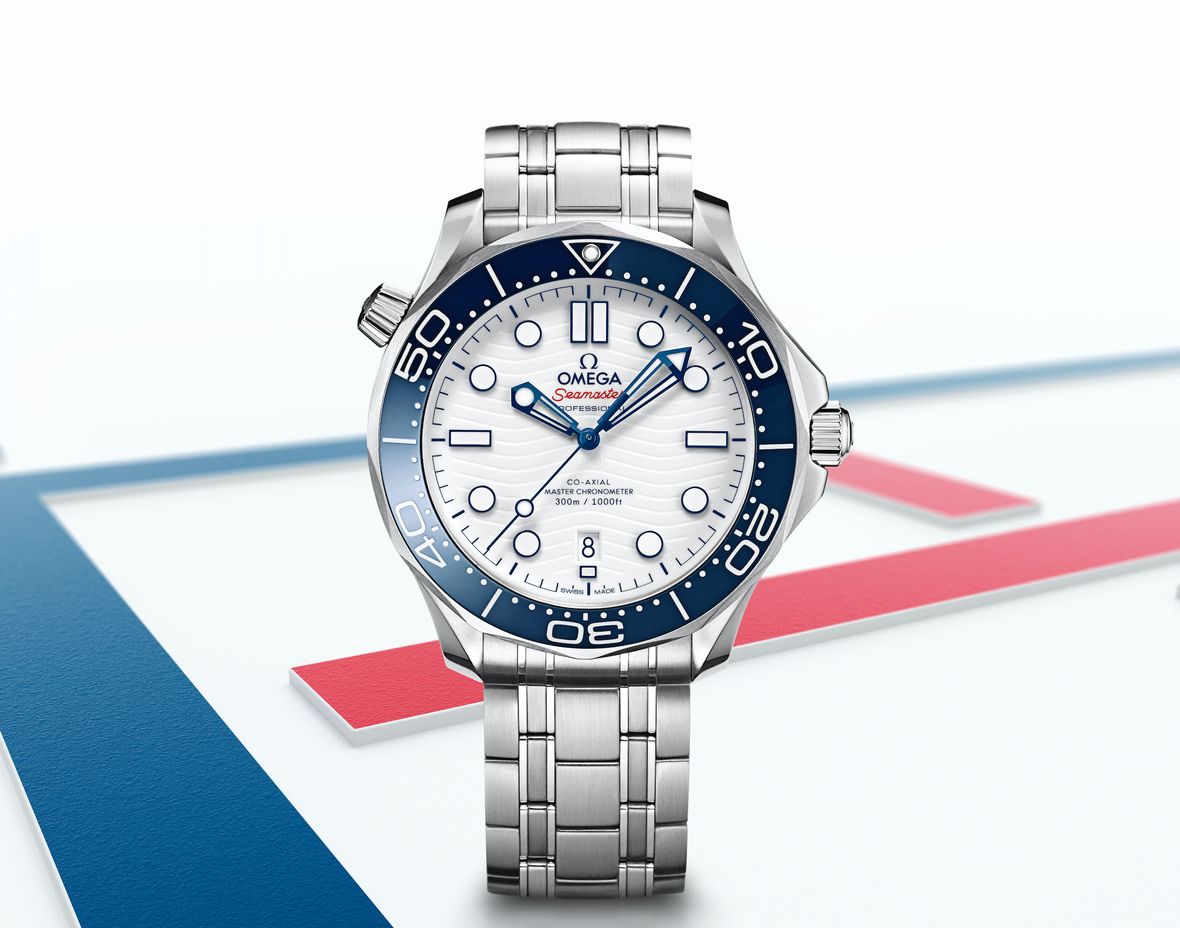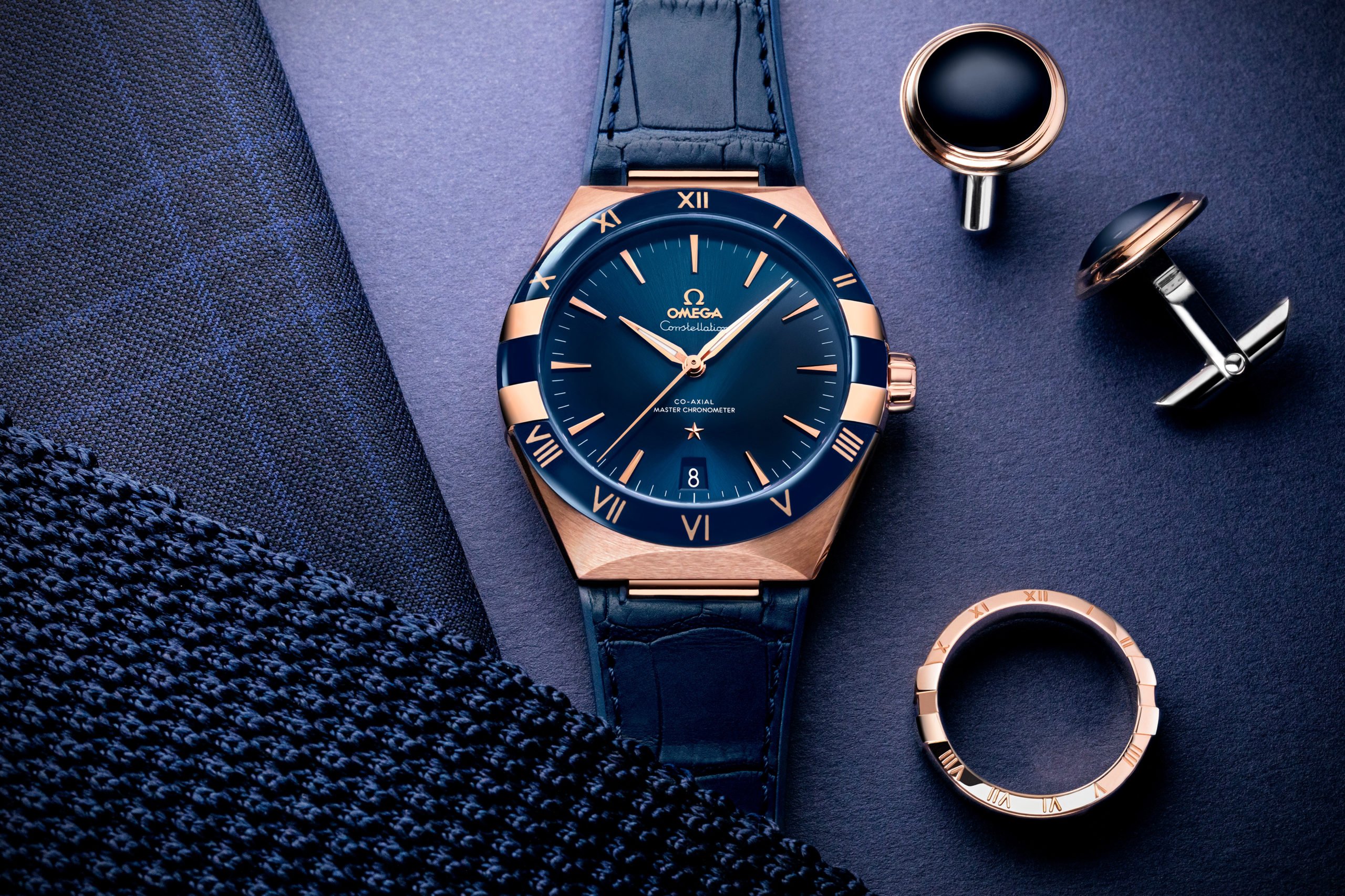Right now, the world has its eyes on what is perhaps the one event that has the power to unite it despite political and social issues: the Olympic Games.
The world also takes note that the Games’ main sponsor is the watch brand OMEGA. And unlike many of the other sponsors, OMEGA watches have a very important job in Paris: to time the individual events. This is a job so important one could even say it is paramount to the Games’ effective success.

The history of OMEGA includes a significant milestone with the Olympic Games, having first served as the official timekeeper in Los Angeles in 1932, where just one single technician used mechanical stopwatches to time every event. The 2024 Games in Paris marks OMEGA’s 31st appearance as official timekeeper, and how the Games are timed have changed immeasurably.
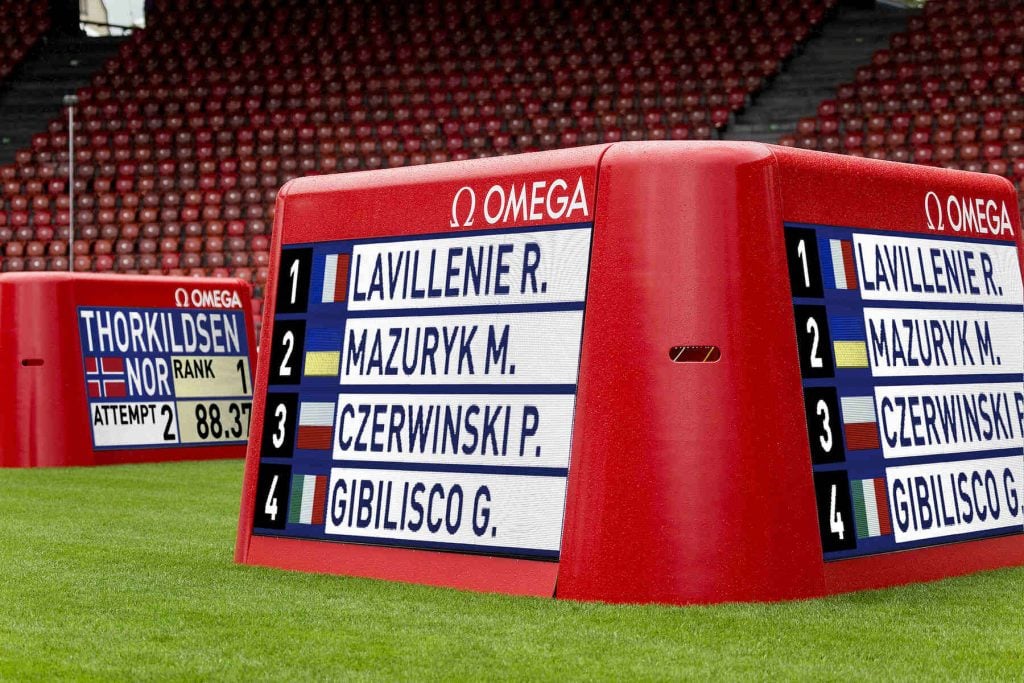
OMEGA will record the times of all 329 Olympic events across 32 different sports with 550 on-site professionals supported by 900 trained volunteers. Together they operate 350 tons of equipment that includes 85 public and 350 sports scoreboards connected by 200 kilometers’ worth of cable and optical fiber adapted to the requirements of data handling and state-of-the-art timekeeping created for the requirements of each individual sport.
Sports timing for Swatch Group brands is done with the help of its internal company Swiss Timing, which was established in 1972. Swiss Timing has been present at Olympic Games since 1976, and continues here in collaboration with OMEGA, whose OMEGA Electronics sports department was officially integrated into the Swiss Timing structure in 2005.
A Historical Overview of Sports Timing
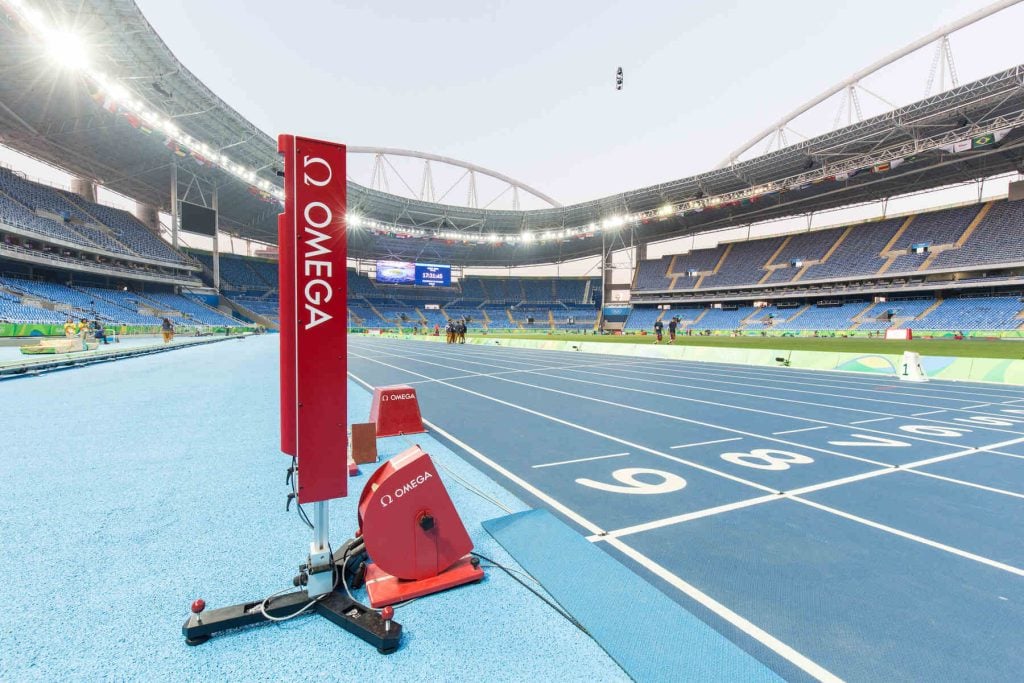
Sports timing was hand-operated until 1945, when photoelectric timekeeping replaced the broken-wire system with a narrow light beam that was crossed by athletes at the start and finish lines, thus communicating information to chronographs by means of a far more accurate photoelectric cell. Certainly the harbinger of electronic timekeeping in sports, it was first officially used at the Winter Games in St. Moritz, Switzerland in 1948.
Things changed rapidly after quartz watch technology arrived. The OMEGAscope allowed real time to be integrated into televised sports reporting using superimposed, luminous numbers at the bottom of the screen. This was first seen at the 1964 Innsbruck Winter Games, which OMEGA calls “the first fully electronic Olympic Games.”
In 1968, integrated and automatic timekeeping was part of both Longines‘ and OMEGA’s measurements and displays, which were now accurate to one-hundredth of a second. By 1969, the photoprint system contained no moving parts whatsoever thanks to microelectronics. Time was displayed on light-dot matrixes and could be filmed by standard cameras or video equipment, thus ushering in the era of the televised broadcast of sports times. The Calgary Games in 1998 were the first to have computerized timekeeping, results, and even analyses. Additionally, since 1999 information generated at any sports event timed by Swiss Timing can be available on the Internet in less than ten seconds.
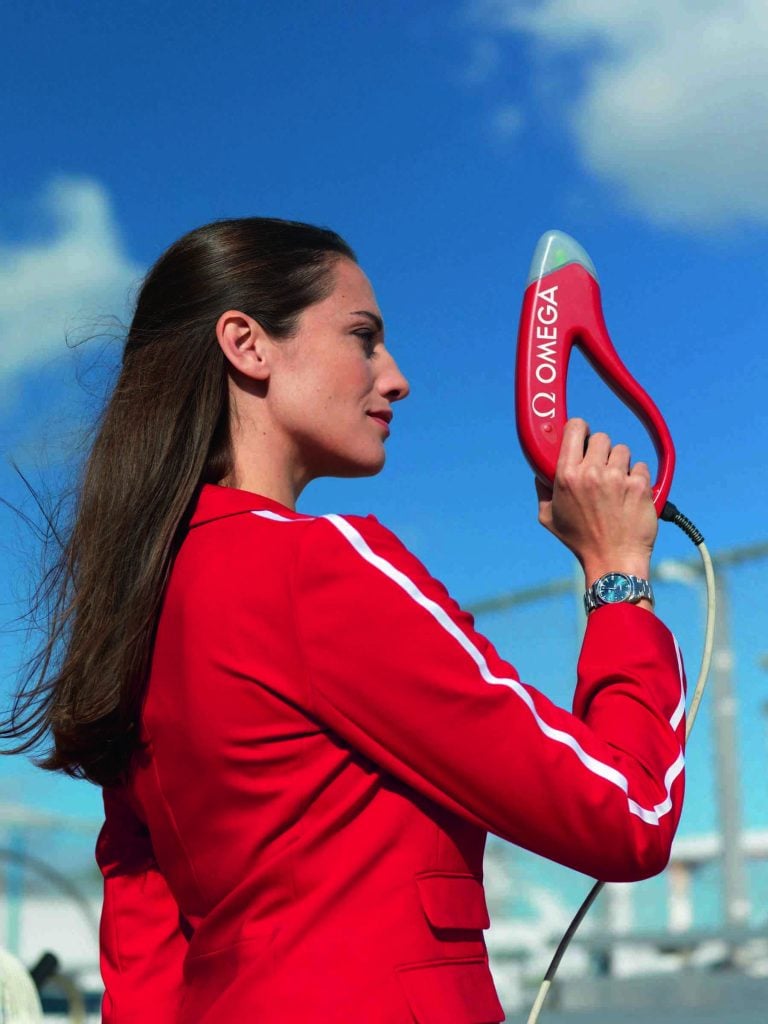
The 2010 Games in Vancouver saw the introduction of the new Electronic Starting Pistol, which replaced the traditional starting pistol. The latter was supplanted by a streamlined, quasi-futuristic device comprising a flash gun and a sound generation box. When the “trigger” is pushed, three things happen: a sound is played, a light flash is emitted, and a start pulse is given to the timing device. By pressing the trigger a second time within two seconds, a false start can be audibly indicated.
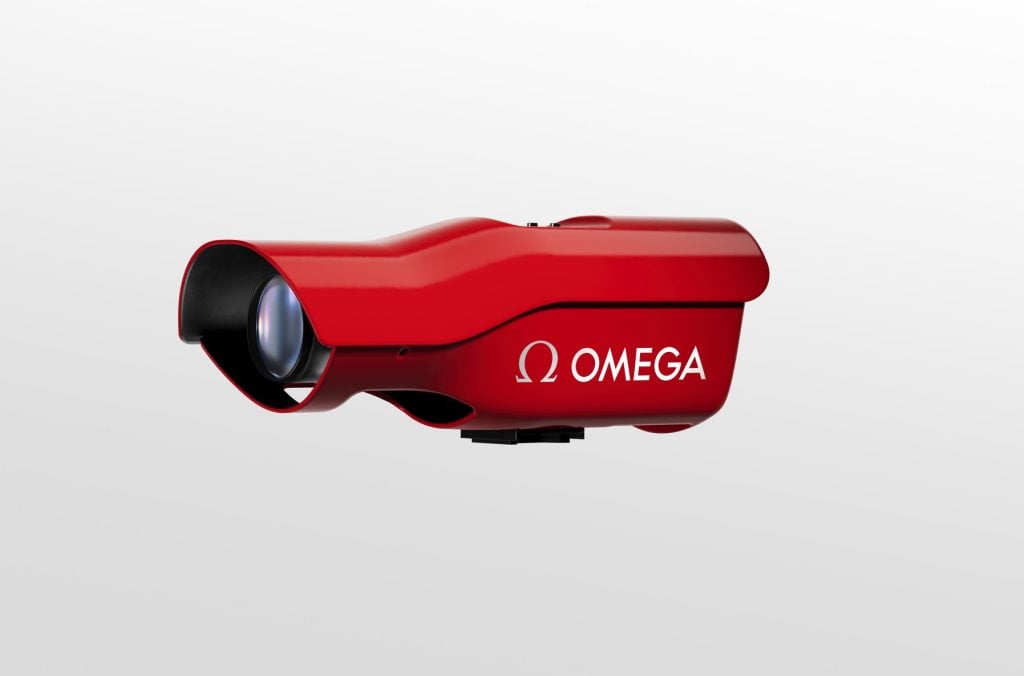
OMEGA and Swiss Timing bring along some new timekeeping technologies for the Paris Games beginning on July 26, 2024, including the Scan ‘O’ Vision Ultimate for higher-resolution photo finish technology, a gadget that can capture up to 40,000 digital images per second at the finish line.
Three New Watches
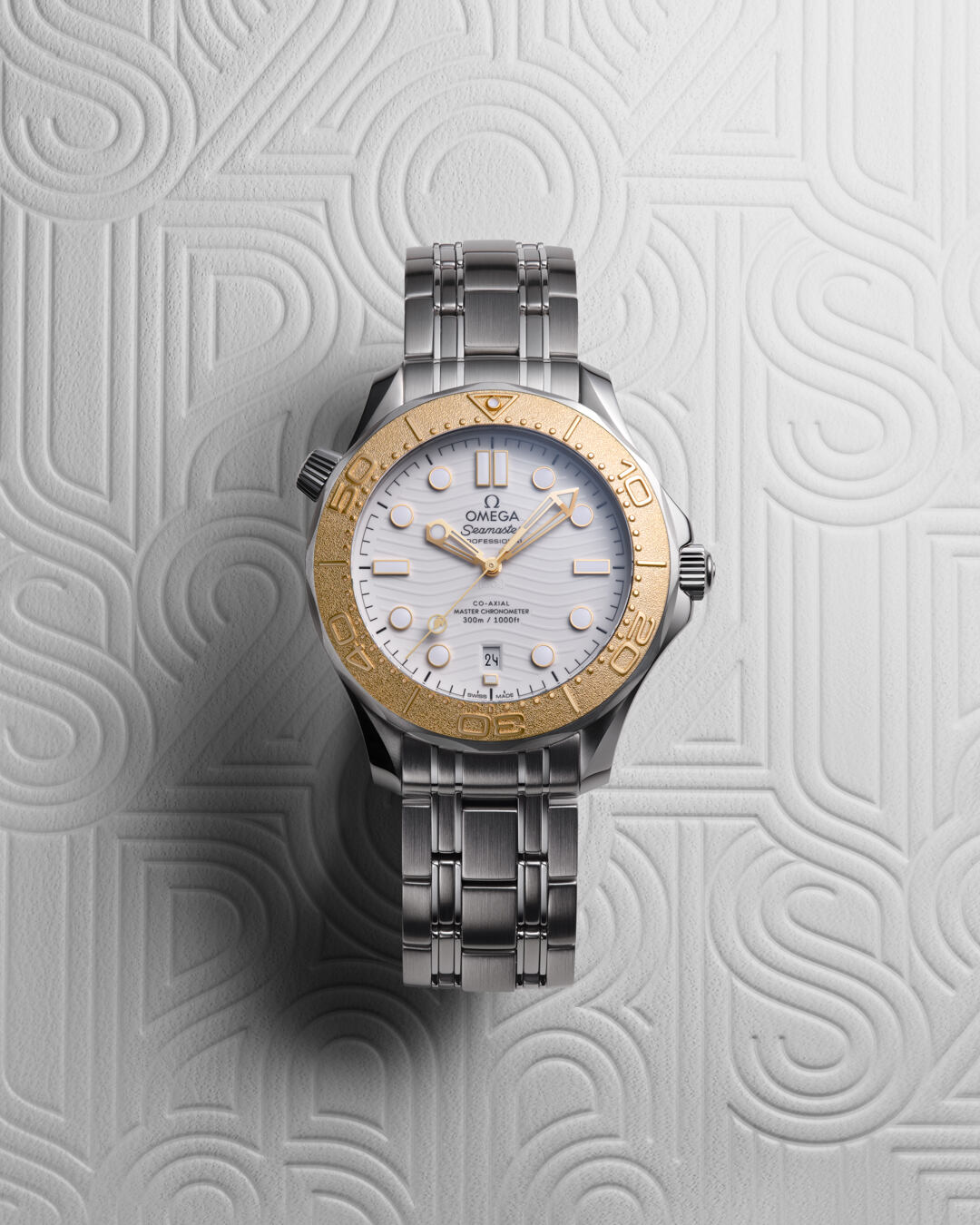
Naturally, OMEGA will be introducing new OMEGA watches in honor of the Olympic Games in Paris, none of which are limited editions. One is the 42 mm Seamaster Diver 300M Paris 2024, a stainless-steel watch with Moonshine Gold bezel that includes a tribute to the athletes’ coveted medals in Moonshine Gold on the case back. It is powered by the Co-Axial Master Chronometer Caliber 8800, which is a METAS-certified OMEGA movement for extreme accuracy. This watch is visually extraordinary with its white ceramic dial with wave pattern, Moonshine Gold hands, and an attractively lasered bezel. A nice commemorative touch on this Seamaster Diver 300M is a small torch at the end of the second hand, echoing the gold medallion on the case back. The quick-release system allows the wearer to change out the bracelet for straps instantaneously.
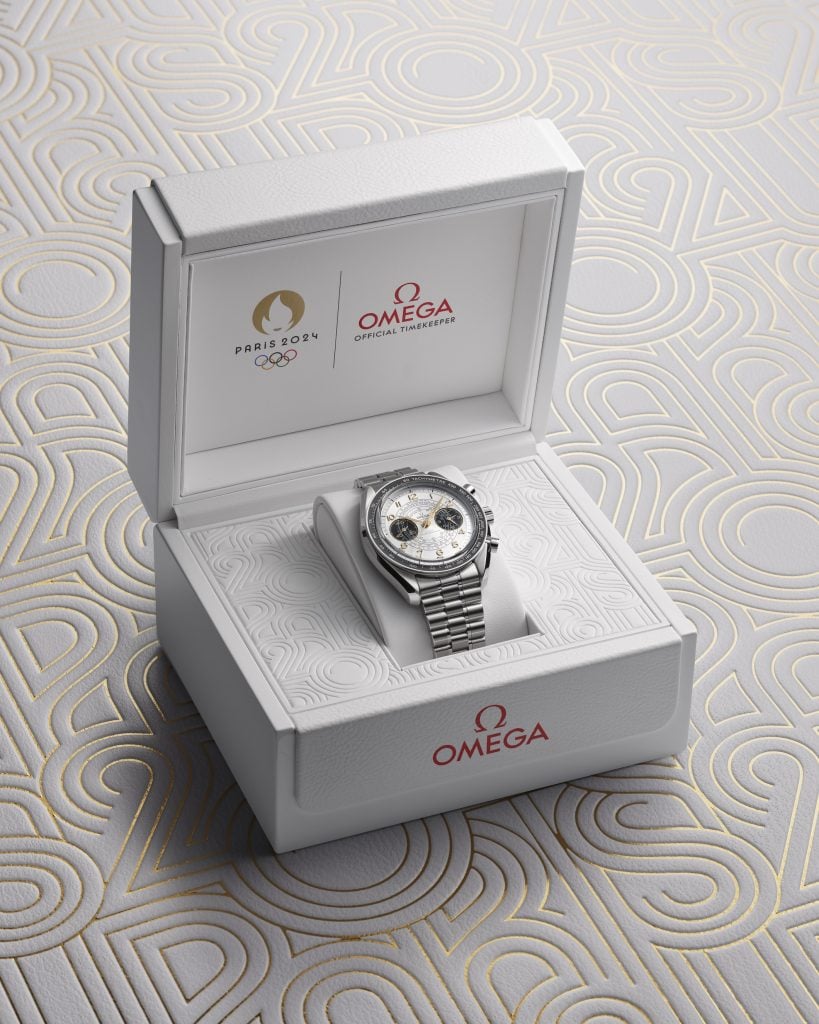
Next is the 43 mm Speedmaster Chronoscope Paris 2024 presented in the black, white, and gold CI colorway of this edition of the Olympic Games and available in stainless steel or full Moonshine Gold. Perhaps the standout element of this OMEGA Speedmaster Chronoscope version is the dial with its two-counter chronograph layout and the various scales for measuring distance, pulse, and speed (telemeter, pulsometer, and tachymeter) in the dial center and on the bezel that gives it vintage-style charm. This watch is powered by the Co-Axial Master Chronometer Caliber 9908/9909, which is METAS-certified for extreme accuracy.
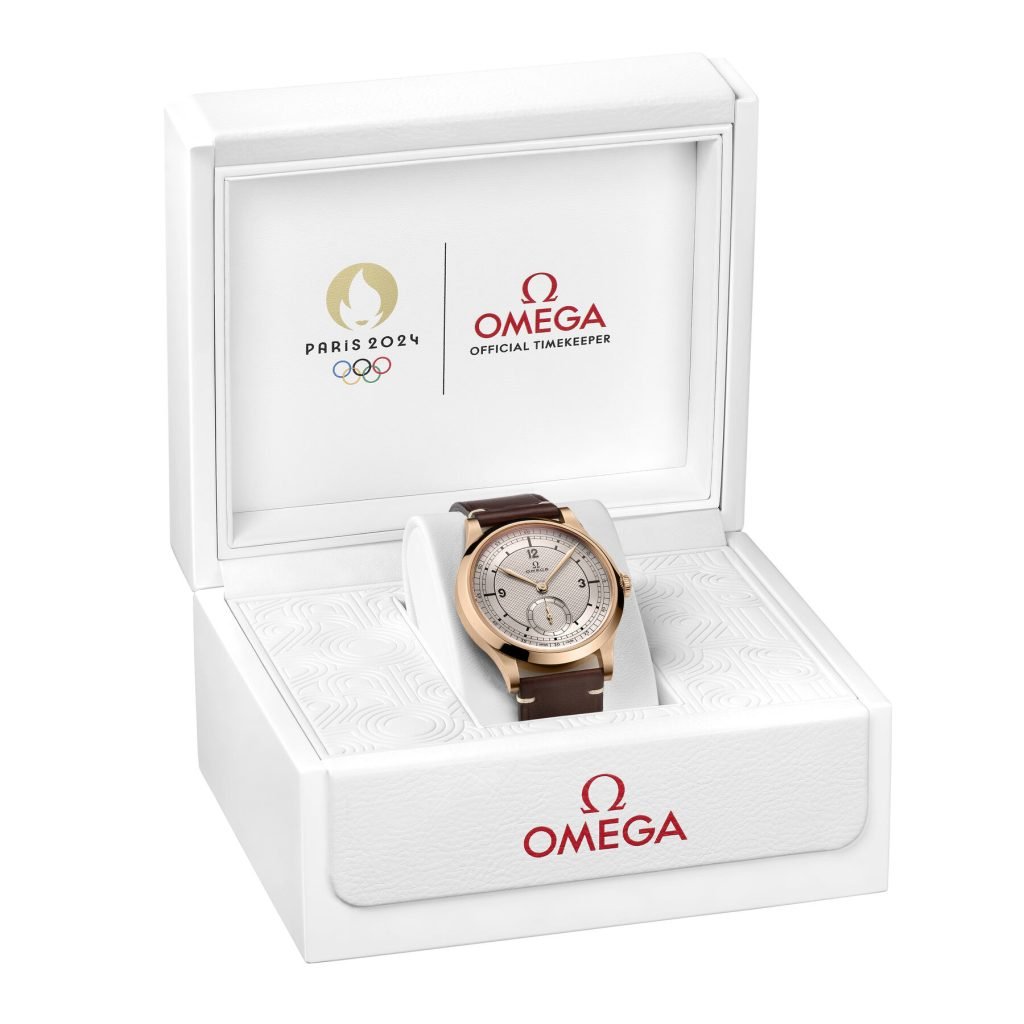
Finally, the Paris 2024 Bronze Gold Edition incorporates all three metals important to Olympic champions into one collectible design: OMEGA’s exclusive Bronze Gold (hallmarked 9K, the gold-and-bronze alloy also contains palladium and silver) for the 39 x 11.7 mm case, a dial made of 925 silver, and elegant hands in OMEGA’s 18-karat Sedna Gold with a special PVD Bronze Gold coating. Its timeless, vintage style was inspired by a classic OMEGA wristwatch from 1939, and the case back is stamped with an Olympic Games Paris 2024 medallion. It is powered by OMEGA’s Co-Axial Master Chronometer Caliber 8926, a manual-winding movement that pays tribute to the vintage 30T2 movement. A certification card, proving that each watch has passed the Master Chronometer tests set by METAS (the Swiss Federal Institute of Metrology) is included in the special presentation box housing the timepiece. Like the previous two, this watch is a special, unlimited edition.
Let the Games begin!




